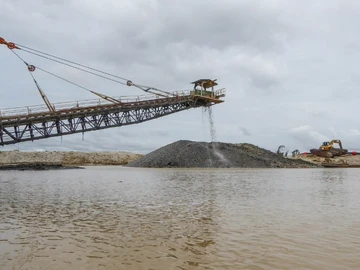Novel restoration strategy of gold mining areas in Colombia
November 21, 2016.
Gold mining is considered an axis of development in Colombia. Yet, there is a common perception that the expansion of gold mining has environmental and health impacts, leads to competition over land and water, as well as to the loss of livelihood for farmers.
Alluvial gold mining generates a vast amount of deposits. Gravel and sand completely cover the natural soil and destroy riparian ecosystems. In Colombia, about 79,000 ha of land area are affected by gravel deposits, especially in the Antioquia Department.
Degraded land can be reclaimed for agroforestry purposes. Since 2000, a gold mining company has been reclaiming deposits in two municipalities of Antioquia by supporting settlers through the establishment of farmland with integrated trees and shrubs. Cassava and plantain are combined with lemon and orange trees and livestock in these agroforestry systems. This complements reforestation efforts. More than 600 ha have already been reclaimed this way.
This ZEF research project provides a comprehensive understanding of transition processes from nutrient-poor and acidic deposition sites towards productive agroforestry-based systems. It explores the spatial variability of substrate properties and their changes over time and assess the influence of these properties on biomass production and the nutritional status of the vegetation. Another study component looks into farmers’ perceptions and strategies to cultivate various qualities of the land.
<link fileadmin webfiles zef_news no_34 zefnews_34.pdf download file>This article was published in ZEFNews 34


